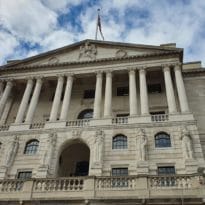US inflation will bounce back in 2021, while dollar weakness will persist, according to industry experts.
Clark Fenton, manager of the RWC Diversified Return fund, said the decision by central banks to let economies “run hot” will see inflation exceed the Federal Reserve’s 2% target next year, presenting challenges to investors amid record low yields in fixed income markets.
He says: “The timing of when this inflation feeds through is never certain, but it’s reasonable to conclude by the end of next year that we’ll have some proper inflation in the works. This is especially true if you think, as we do, that the Fed and other central banks will run their economies hot and keep a lid on rates and investors need to be prepared for this.”
Fenton believes most major central banks are deliberately trying to stoke inflation as a by-product of monetary stimulus, in tandem with fiscal stimulus from governments.
Fenton comments: “We are bound to see continued monetary accommodation globally, although fiscal stimulus measures are likely to vary between countries. Crucially, to generate inflation, central banks will seek to depreciate their currencies in a race to the bottom. This too will stoke inflation.”
As a result, traditional portfolio diversification could pose a challenge for investors, with inflation-linked government bonds already looking expensive, says Fenton. The pile of negatively-yielding debt globally has continued to grow throughout 2020, creating serious headwinds for many financial assets. Against this backdrop, real assets are likely to become more attractive to investors.
He adds: “In this environment, with currencies being debased, and with a lack of alternatives in the bond market, real assets are one of the few places left to hedge against the inflation we think is coming. Currency weakness is one reason to hold real assets like commodities, but there was a value case there already, as they were very undervalued versus financial assets.
“Now, if we get this inflation pickup, and if you have other assets like bonds offering negative yields, that case for diversifying into real assets just gets stronger.”
Meanwhile, the dollar is expected to weaken going forwards, as a result of monetary and fiscal policies in the US.
 Chris Rush, senior fund analyst, IBOSS Asset Management, says a weakening dollar should be more favourable for areas outside of the US, such as the UK and emerging market equities.
Chris Rush, senior fund analyst, IBOSS Asset Management, says a weakening dollar should be more favourable for areas outside of the US, such as the UK and emerging market equities.
“These regions have struggled in a market that has been defined by dollar strength for much of the past six years. In short, the areas, funds, and industries which have performed well over this period may face headwinds going into the next number of years.”
UK investors have endured continuous underperformance of the FTSE 100 despite its well-documented international exposure as the dollar strengthened. However, its exposure is still significantly underweight compared to many other global equities.
Rush adds: “Compared to other global indices, the impact of a weak dollar could be minor. The FTSE 100 may provide investors with a hedge against dollar risk as portfolios have become increasingly skewed toward positions that benefit from a strong dollar.
“Ultimately, currency may not be the largest factor to consider when looking at the outlook for the FTSE 100. It may be that the Index’s overweight to cheaper value stocks, via oil, mining and financials, provide a natural hedge against the dollar, especially for US investors.
Rush concluded that the UK “appears attractive following five years of underperformance”.




































